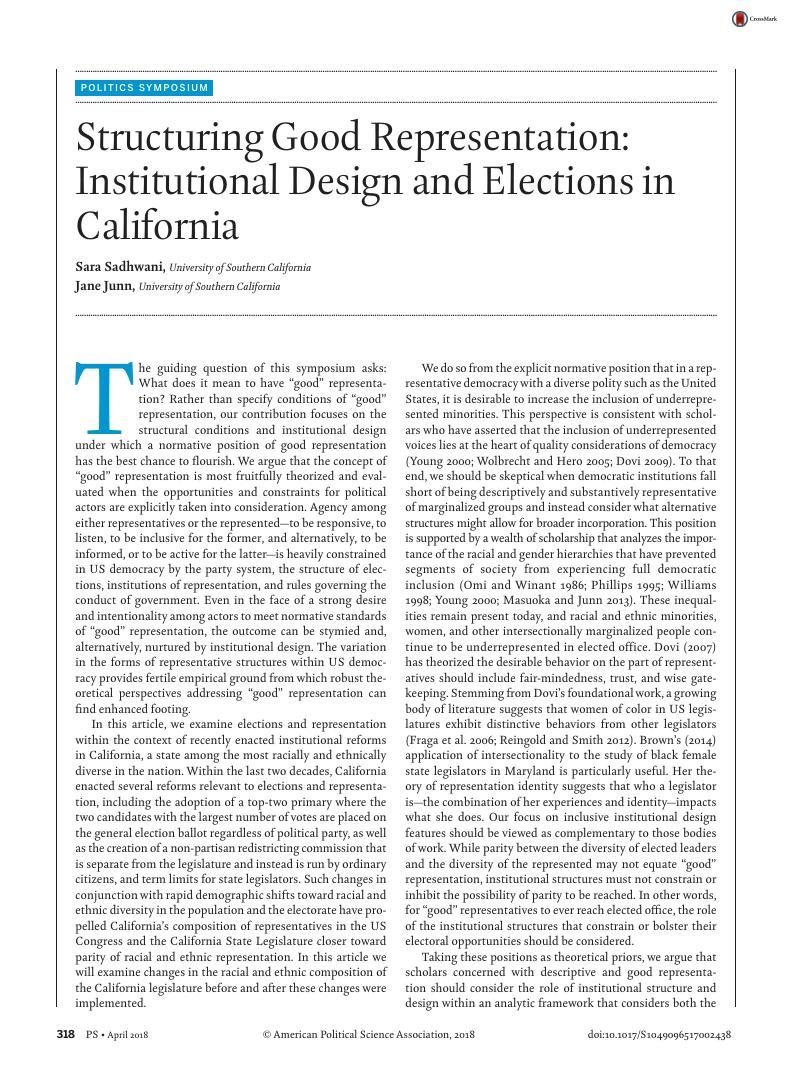Crossref Citations
This article has been cited by the following publications. This list is generated based on data provided by Crossref.
Grose, Christian R.
and
Nelson, Matthew
2021.
Independent Redistricting Commissions Increase Voter Perceptions of Fairness.
SSRN Electronic Journal,
Centeno, Raquel
Grose, Christian R.
Hernandez, Nancy
and
Wolf, Kayla
2021.
The Demobilizing Effect of Primary Electoral Institutions on Voters of Color.
SSRN Electronic Journal ,



